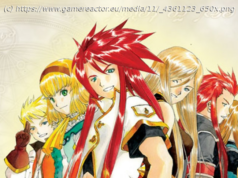Amazon is building a massively multiplayer game with an entirely unique world and setting. We interviewed three of the game developer’s about why Amazon is taking a risk on ‘New World,’ how the company’s cloud tech makes massive scale possible, and how the game’s sandbox will be deadly fun.
Amazon is working on a massively multiplayer game, but it’s not the World of Warcraft clone you’d suspect. It’s a different beast entirely. The game’s wholly original world mashes medieval, enlightenment, and early industrial themes with a wild frontier. Players set out to conquer this world, alone or together, gathering resources and building small societies.
New World uses Amazon’s cloud tech as a backbone on which to build the world, making it possible for hundreds, even thousands, of players to coexist at once. We spoke with three of the game’s developers about why Amazon has backed a game that’s different from mainstream competitors, and how the cloud will be used to expand its scale beyond anything seen before.
Matthew S. Smith, Senior Editor, Digital Trends: Just looking at a screenshot of New World makes it clear it’s different from ‘mainstream’ online games. It’s a bold direction for a flagship game from Amazon’s new gaming venture. Did the game’s core idea come about before Amazon’s involvement, or after?
Patrick Gilmore, Studio Director, Amazon Game Studios Orange County: New World has been created wholly internally to Amazon. As a studio, we had been discussing the idea of an open-ended survival sandbox game.
We love the thematic ideas of a newly discovered world, crude technology that might advance and mature over time, and the role that faith and superstition play in establishing an enduring settlement. And more than anything, we loved the idea of a frontier—a sort of boundary between the known and unknown, implying there would always be something new to discover.
When we shared the original idea internally, the main question that came up had to do with scale. What if it’s not a game made up of small raiding parties of five or six, but whole armies? What if it’s more about building up—not just scraping by? These two concepts, a new world of superstition and discovery matched with new experiences that spring from enormous scale, drove our thinking.
New World aims to have a huge map with hundreds, perhaps over a thousand, players populating it at once. Is that something that would be possible without the help of Amazon’s server tech?
Gilmore: To host Aeternum, the “world” of New World, we created new back-end technology that scales a single game simulation over multiple hubs in AWS cloud. The back end is the glue that holds the experience together. None of it would be possible without the work our team did to leverage Amazon’s cloud.
Rich Lawrence, Executive Producer, New World: It’s certainly possible to build multi-host back ends with a variety of approaches, so we don’t lay claim to that exclusively. But AWS is a great enabling environment for development.
Hosts are available with the push of a button, deployment and monitoring are supplied by default. It’s less to worry about up front and the assurance of hardware scale is always there when you need it. If our team suddenly needs ten server sets for a test instead of one, that’s just a configuration issue.
Many MMOs and online games, from World of Warcraft to Destiny, frequently separate players into ‘instances’ to keep player counts low. What made Amazon Game Studios decide on a different direction?
Gilmore: We think large scale world simulations are an inevitable evolution of game technology. We don’t see it as an either/or situation, since even in the context of a massively shared space like New World, players will organize into smaller groups based upon play style, ease of communication and availability.
But by breaking down those limitations, we hope to present a host of new kinds of gameplay, and radically expand the kinds of relationships that emerge among players, from traditional competitive PvP all the way through formation of in-game societies.
Home
United States
USA — software Can gamers build a society? We’ll find out in Amazon’s ‘New World’






